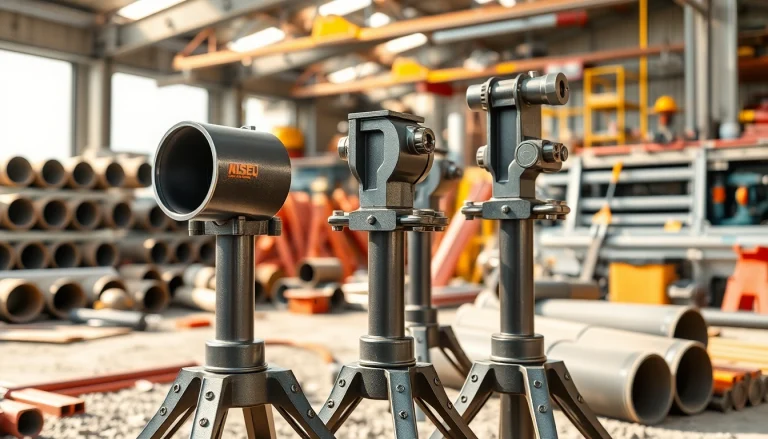Understanding Oxy Gas Welding Kits
Oxy gas welding is a vital technique employed in metalworking and fabrication, allowing craftspeople to join metals with precision and strength. At the heart of this process is the oxy gas welding kit, a compact and efficient package that simplifies the welding process. In this section, we will delve into the definition, components, and practical applications of these kits, providing a thorough understanding for novices and seasoned professionals alike.
What Is an Oxy Gas Welding Kit?
An oxy gas welding kit is a collection of essential tools and equipment used in oxy-fuel welding, a method that combines oxygen with a fuel gas, typically acetylene, to produce a flame hot enough to melt and fuse metals. This process is widely utilized in various industries, including automotive repair, metal art creation, and general fabrication. The kits come in different configurations, ranging from portable, lightweight setups for hobbyists to robust, industrial-grade systems meant for heavy-duty applications.
Components of a Complete Oxy Gas Welding Kit
A typical oxy gas welding kit consists of several critical components:
- Torch: The torch is where the gases mingle and ignite, producing the flame necessary for welding or cutting.
- Gas Regulators: Regulate the flow and pressure of oxygen and acetylene from their respective tanks. Ensuring accurate regulation is vital for achieving optimal flame characteristics.
- Hoses: Flexible conduits that carry gases from the tanks to the torch. These hoses are typically color-coded: green for oxygen and red for acetylene.
- Tanks: High-pressure containers that store oxygen and acetylene. They need to be handled with care and stored properly to avoid hazards.
- Cutting Tip/Nozzles: Different tips are available for various welding tasks, allowing the user to manipulate the flame’s temperature and shape.
- Protective Gear: Includes goggles, gloves, and welding jackets to protect against spatter, intense light, and heat.
Common Uses and Applications
Oxy gas welding kits have a wide range of applications, catering to various industries and hobbies:
- Automotive Repair: Used for bodywork and frame repairs, making it invaluable for automotive technicians.
- Metal Fabrication: Essential for constructing and repairing metal structures and parts, including railings, gates, and furniture.
- Culinary Applications: In specialty cuisine, it can be used to caramelize or create decorative effects on food.
- Sculpting and Art: Artists and craftsmen utilize these kits for creating intricate metal sculptures and decorative pieces.
Key Features to Look For
Essential Components: Torches and Regulators
When choosing an oxy gas welding kit, it’s critical to consider the quality of essential components such as the torch and regulators. The torch should provide a consistent flame and be ergonomically designed for comfort and control. Regulators must allow fine control over gas flow and pressure, ensuring a stable flame and preventing potential accidents. Look for kits with built-in safety features, such as automatic shut-off valves.
Tank Size and Compatibility
Tank size is another crucial consideration, as it affects the portability and duration of usage. For light applications or hobby projects, smaller, portable cylinders might suffice, while professional environments may demand larger tanks that can sustain prolonged use. It’s essential to ensure that the tanks and valves are compatible with the torch and regulators included in your kit, as mismatched equipment can lead to inefficiencies or hazards.
Safety Features in Oxy Gas Welding Kits
Safety should be a top priority when using oxy gas welding kits. Look for features such as:
- Flashback Arrestors: These prevent the flame from traveling back into the hoses and tanks.
- Pressure Relief Valves: Help mitigate excessive pressure in the gases, reducing explosion risks.
- Color-Coded Hoses: Red and green hoses indicate fuel gas and oxygen, respectively, helping to avoid mix-ups.
- Comprehensive Instruction Manuals: Good kits will come with detailed safety instructions and operating guidelines.
Choosing the Right Oxy Gas Welding Kit for Your Needs
Beginner vs. Professional Kits
The distinction between beginner and professional kits lies primarily in complexity and component quality. Beginner kits generally include basic tools with fewer features, making them easier to use and more affordable. In contrast, professional kits often contain advanced elements, such as high-quality torches and regulators that offer better performance for demanding tasks.
As a rule of thumb, beginners should look for kits that come with comprehensive guides and safety tutorials to facilitate learning, while professionals should invest in reliable brands known for durability and performance under heavy use.
Budget Considerations and Pricing
Pricing for oxy gas welding kits can range widely based on brand, features, and included components. Beginner kits might start around $100, while professional-grade setups can exceed $500 or more. It’s essential to balance budget considerations with quality; investing in a reliable kit can provide long-term savings and better performance.
It’s also wise to watch for sales and discounts, especially from reputable suppliers. Many suppliers offer promotional deals that can significantly reduce costs while still ensuring you get a quality product.
Brand Recommendations
When selecting an oxy gas welding kit, certain brands stand out for their reputation and quality:
- Harris: Renowned for reliable equipment and a broad range of products suitable for different applications.
- Victor: A trusted name in the industry, offering high-performance cutting and welding torches.
- Unimig: Provides fully equipped kits ideal for both beginners and professionals, known for their durability.
- Lincoln Electric: Offers high-quality welding equipment suited for industrial applications.
Maintaining Your Oxy Gas Welding Kit
Regular Maintenance Tips
Proper maintenance is crucial for the longevity of your oxy gas welding kit and ensuring safety during use. Follow these tips:
- Inspect Hoses: Check for any signs of wear, cracks, or leaks. Replace damaged hoses immediately.
- Clean Nozzle Tips: Regularly clean the nozzle tips to prevent clogging, which can affect performance.
- Check Seals and Connections: Regularly tighten all connections and inspect seals for leaks.
- Test and Replace Regulators: Ensure that regulators are working properly; replace them if you notice any inconsistencies in gas flow.
Common Issues and Troubleshooting
Even the best oxy gas welding kits can encounter issues. Here are some common problems and their solutions:
- Weak Flame: May indicate low gas pressure or an obstructed nozzle; check the regulator settings and clean the nozzle.
- Flashbacks: Can be dangerous; ensure all connections are secure, and install flashback arrestors if not already included.
- Gas Leaks: Use soapy water to detect leaks at hose connections; replace any faulty hoses or connections immediately.
Storage and Safety Protocols
Proper storage of your oxy gas welding kit is essential for safety and longevity. Follow these guidelines:
- Store Cylinders Upright: Always store tanks upright and secure to prevent tipping.
- Avoid Heat Sources: Keep the kit away from extreme temperatures and open flames.
- Proper Ventilation: Ensure that the storage area is well-ventilated to prevent gas accumulation.
- Follow Local Regulations: Adhere to any local laws regarding the storage and transportation of gas tanks.
Advanced Techniques and Tips for Use
Optimizing Your Oxy Gas Welding Technique
To achieve the best results when using your oxy gas welding kit, consider the following advanced techniques:
- Adjust Your Flame: Knowing how to balance the oxygen and acetylene for the desired flame type (neutral, oxidizing, or carburizing) is crucial.
- Control Your Speed: Move the torch at a consistent speed to avoid burning through the metal or creating uneven welds.
- Practice Different Positions: Welding at various angles and positions can help you master this versatile skill.
Safety Best Practices
Safety is paramount when working with high-pressure gases and intense flames. Implement these safety best practices:
- Wear Protective Gear: Always wear appropriate welding helmets, gloves, and protective clothing.
- Keep a Fire Extinguisher Nearby: Be prepared for potential fires by having an extinguisher on hand.
- Know Emergency Procedures: Familiarize yourself and others with emergency response strategies for gas leaks or fire incidents.
Integrating Oxy Gas Welding with Other Methods
Oxy gas welding can be enhanced by integrating it with other welding methods, such as MIG or TIG welding. This combination allows for versatile applications where different techniques can complement each other, providing more robust and intricate welds. Understanding how to transition between these methods can augment your skill set, making you a more capable and adaptable welder.







